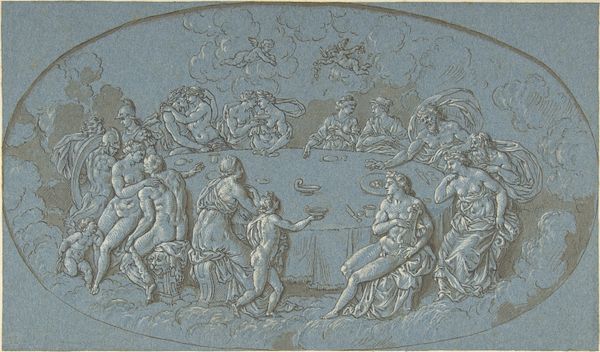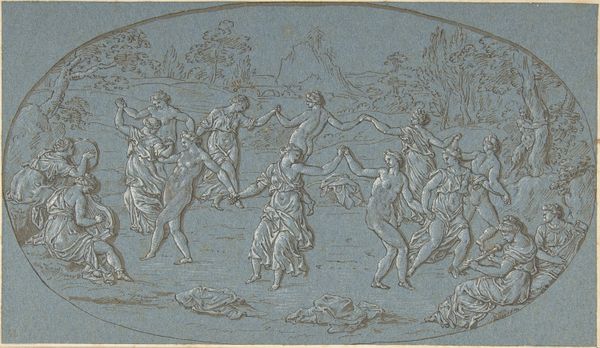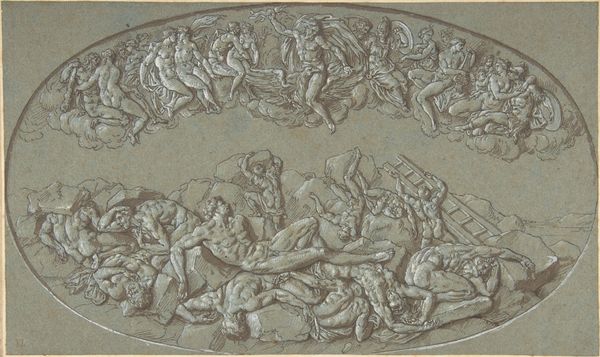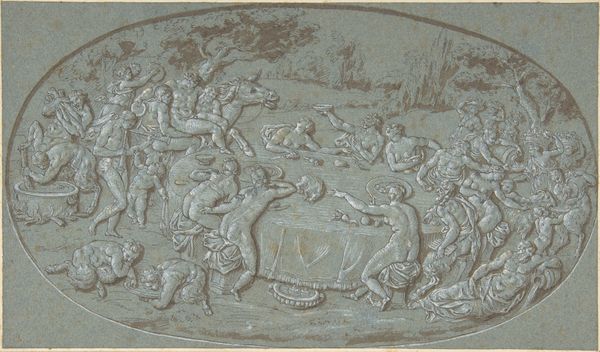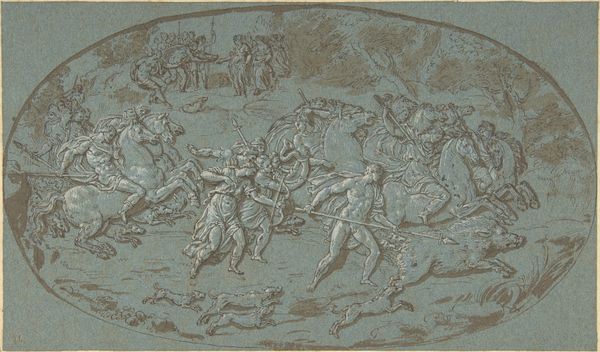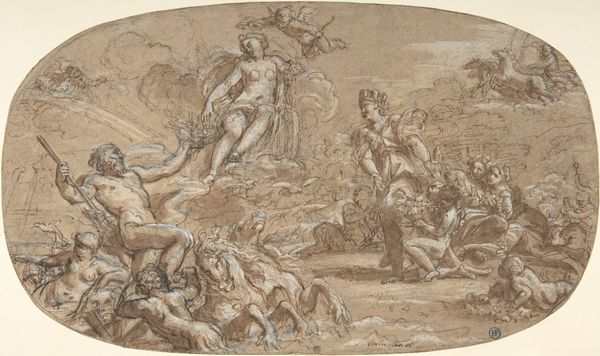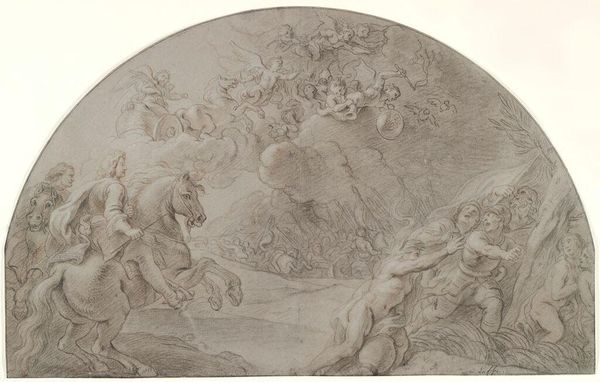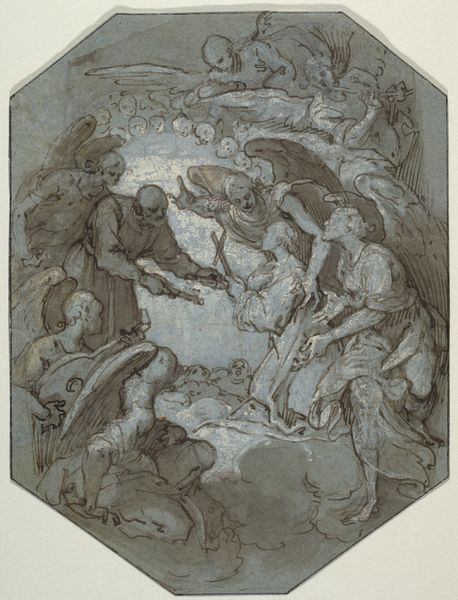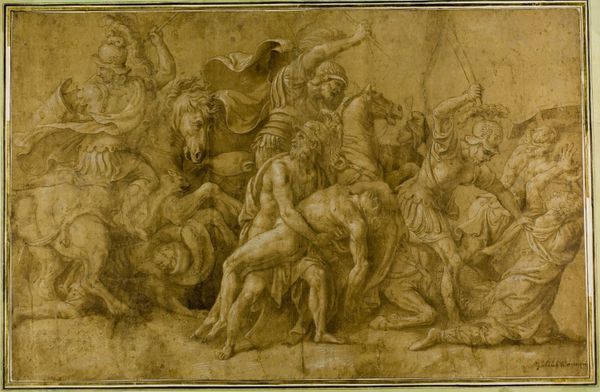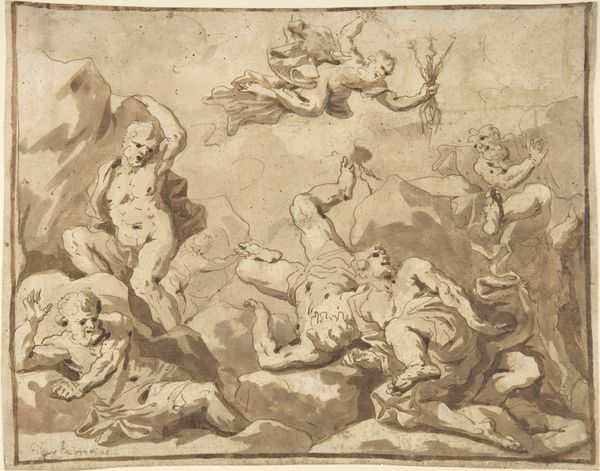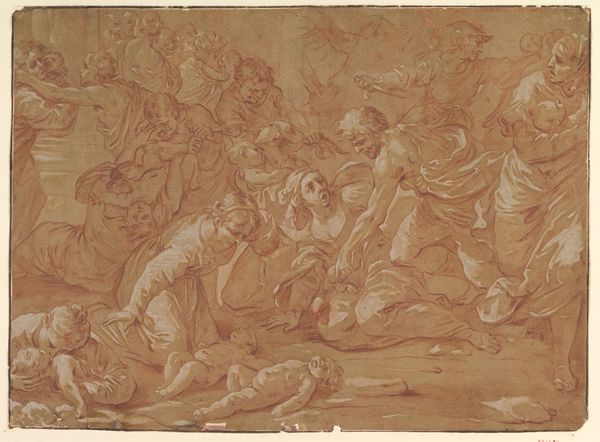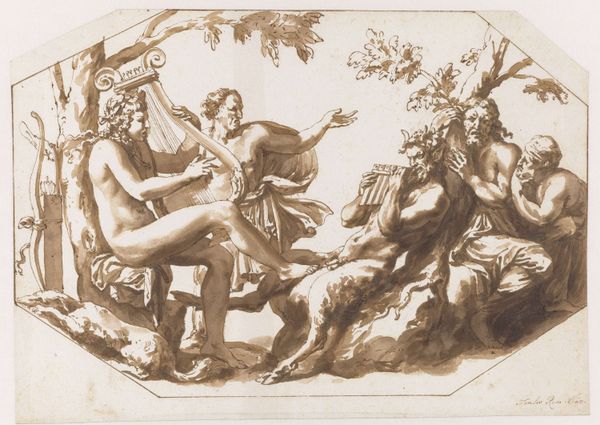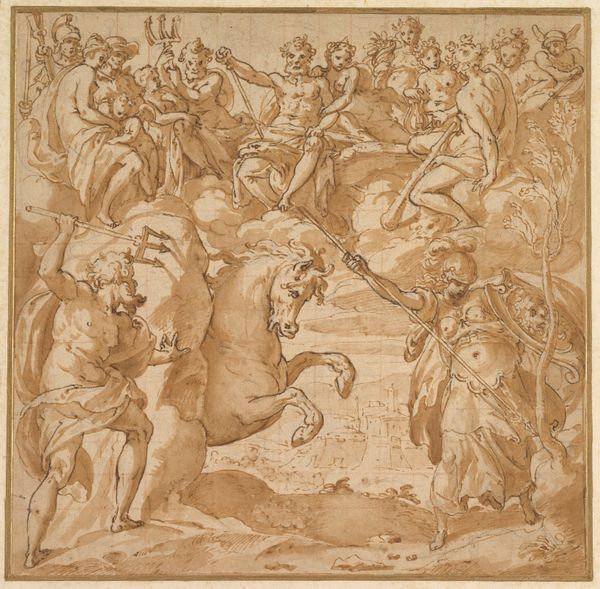
drawing, print
#
drawing
#
allegory
#
baroque
# print
#
genre-painting
#
nude
#
erotic-art
Dimensions: sheet: 6 5/16 x 10 13/16 in. (16.1 x 27.5 cm)
Copyright: Public Domain
Curator: This artwork is titled "Nymphs and Satyrs". It's attributed to Bernard Picart, and was likely created sometime between 1693 and 1733. You can see it now at the Metropolitan Museum of Art. Editor: It strikes me as an oddly serene chaos, all rendered in these cool, muted tones of grey against a blue background. It’s a print, isn’t it? There's this delicate crosshatching everywhere, but look at all the figures piled up. Curator: Indeed. The artwork reflects the Baroque obsession with movement, sensuality, and the complexities of mythological themes. Printmaking at the time allowed artists like Picart to widely disseminate such classically inspired and erotically charged scenes. It’s important to consider the evolving societal views on the public display of nudity at the time. Editor: Speaking of composition, I find the oval shape, which encloses this swirling vortex of figures, quite fascinating. It really traps the eye. Look at how Picart uses the central tree to anchor the scene while everyone around is actively chasing or being chased. Curator: Yes, the tree becomes a visual and symbolic fulcrum. We are witnessing Picart responding to his time, using art to navigate new roles and societal expectations through artful, historical, and culturally significant stories. The use of mythological figures provided a safe space for exploring controversial themes. Editor: Do you think "safe" is really the right word? The expressions seem frenzied. Is that a forced abduction I spot happening in the foreground? While the formal grace is remarkable, there's an undercurrent of unease here, isn't there? Curator: Certainly, there's a tension. The figures—both nymphs and satyrs—represent the play between refined culture and unrestrained nature. But whether that reads as an appealing liberty or alarming violation depends greatly on the viewer’s social context and position. It is impossible to ignore these historical views while considering the social and political climate in which it was produced. Editor: Right. This close analysis does invite contemplation about power dynamics within historical narratives, even—or especially—the playful ones. Curator: I agree, recognizing the intended audience and how imagery and its interpretations reflect specific societal positions makes us question broader artistic narratives.
Comments
No comments
Be the first to comment and join the conversation on the ultimate creative platform.
